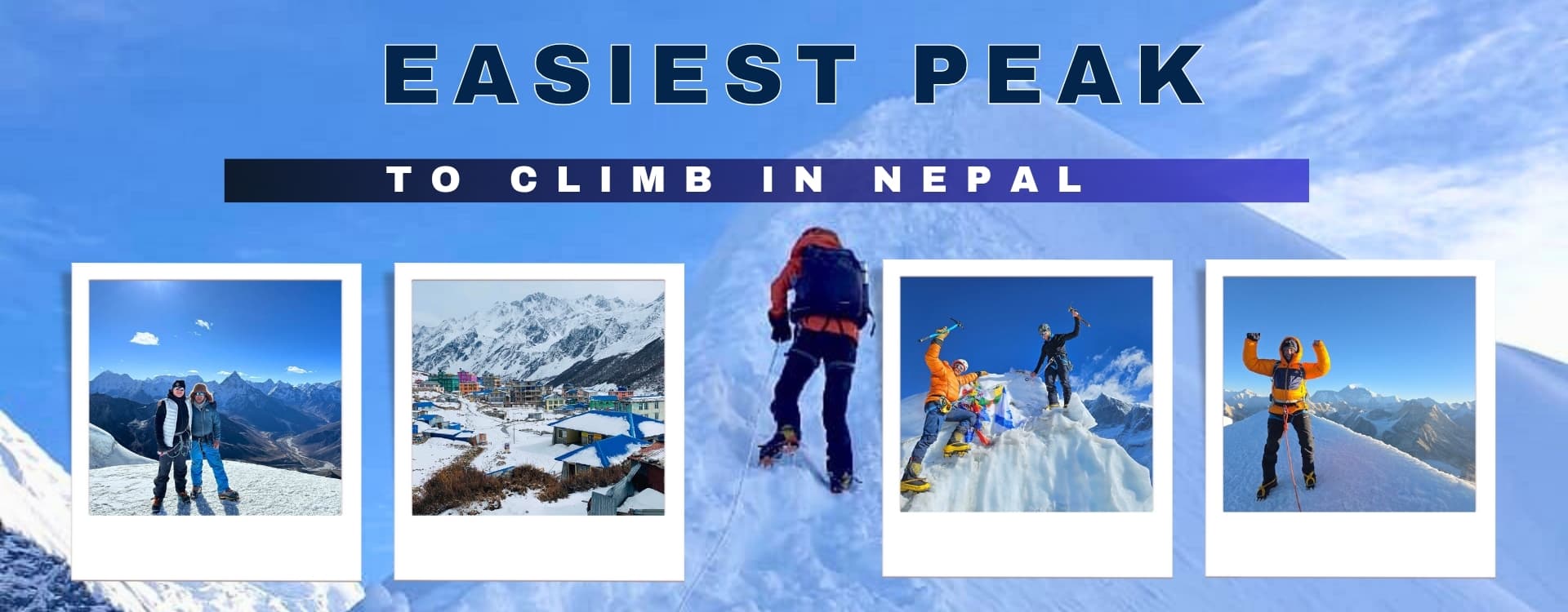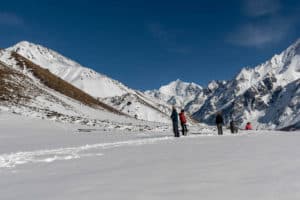Imagine: the world sprawling beneath, as crystalline mountain air brushes your face—a sensation undeniably euphoric. This profound experience, long a cherished dream for countless individuals, has been transformed into tangible reality by those who dare to pursue it.
You don’t need to chase Everest to feel the thrill of the mountains. Across Nepal, safe mountain climbs and beginner-friendly peaks create the perfect starting point for first-time climbers in the Himalayas. Whether you're looking to try beginner trekking in Nepal or take your first steps into alpine climbing, there are accessible routes built for your journey.
In this guide, we’ve gathered a list of Nepal’s best peaks for beginners to advanced climbers. These options suit those new to mountaineering and those ready for the next step. This is where your Himalayan story can begin—with confidence and the right kind of challenge.
Why Nepal Calls First-Time Climbers and Trekkers
When considering a first foray into the world of high-altitude adventure, why does Nepal consistently emerge as a premier choice for the aspiring mountaineer? While formidable ranges like the Andes and Alps call to adventurers worldwide, the Nepalese Himalayas offer something few regions can match. This is the realm where eight of the world’s fourteen colossal 8,000-meter peaks pierce the sky—a setting that both inspires and humbles.
Though the legendary Sagarmatha (Mount Everest) often dominates the narrative, its towering presence does not eclipse the wealth of peaks accessible to first-time climbers in the Himalayas. Nepal unveils a remarkable spectrum of summits—many of them ideal for those pursuing beginner-friendly mountain climbing in Nepal. Whether you're seeking a guided, non-technical ascent to begin your journey or aiming to advance toward more demanding terrain, Nepal presents a carefully tiered progression.
Peaks such as Island Peak (Imja Tse), the panoramic Mera Peak, the technically approachable Lobuche East, the striking Pisang Peak, and the entry-level Yala Peak represent some of the best climbs in Nepal for beginners. Each one offers a different kind of introduction—balancing achievable elevation with real mountain experience.
But the Himalayan experience is far more than the climb itself. It’s a cultural immersion—into villages shaped by altitude and rhythm, into shared meals, and into a quiet but resilient hospitality that stays with you long after the descent.
Nepal’s legacy in trekking and mountaineering—refined over decades—has also built one of the most reliable support systems anywhere. With licensed guides, experienced porters, and training programs recognized by the Nepal Mountaineering Association (NMA), even first-time climbers can step into the Himalayas with clarity and confidence. As we look toward 2025, the infrastructure continues to evolve—making safe mountain climbs in Nepal more accessible and better supported than ever before.
Defining the Welcoming Summit: What Makes a Peak “Beginner-Friendly”?
The call of the Himalayas stirs something powerful—a mix of ambition, curiosity, and a desire to go beyond the ordinary. For many new to mountaineering, Nepal offers a rare chance to answer that call through a measured and meaningful start. Before reaching for the highest summits, a smart and steady approach sets the foundation for long-term success—and enjoyment.
This is where beginner-friendly peaks in Nepal become essential. But what exactly defines a good choice for someone aiming to climb their first Himalayan summit? What separates a rewarding introduction from a physically overwhelming test? Several key factors shape the answer:
Altitude – The Core Factor
Altitude plays the largest role in shaping your experience. Starting too high too soon increases the risk of altitude sickness and fatigue. That’s why most safe climbs for beginners in Nepal stay below 7,000 meters. Peaks ranging between 5,700 and 6,500 meters strike the right balance: challenging enough to feel real, but still manageable for new climbers with proper acclimatization.
Technical Difficulty – The Nature of the Climb
The physical structure of the route also matters. Many of Nepal’s trekking peaks for beginners involve snow, ice, and glaciers—but without constant exposure to steep, technical rock or vertical ice. These climbs may still require basic alpine skills like using crampons, ice axes, and ropes. If the route includes more complex sections, guided training beforehand becomes essential.
Accessibility and Support – Safety You Can Rely On
Choosing a route close to well-traveled trekking paths can make a big difference. It improves logistics and ensures access to backup support if needed. Most beginner climbing routes in Nepal benefit from a solid framework—licensed guides, experienced porters, and familiar trails that contribute to a safer, more supported experience. This system continues to evolve, offering greater security each season.
Route Intelligence – Climb with Context
Conditions in the Himalayas are changing. Snow patterns, weather shifts, and terrain stability can all affect safety. That’s why it’s crucial to research route history and current conditions before committing. Factors like avalanche risk, exposure to crevasses, and trail erosion need to be part of your decision-making. Informed planning is not optional—it’s essential, especially for those new to high-altitude climbs.
A carefully selected first peak gives you more than a summit photo. It builds experience, confidence, and a real connection to the mountains—laying the path for future climbs with stronger footing.
Yala Peak: A Luminous Gateway for First-Time Himalayan Climbers
Nestled in the quiet expanse of Nepal’s Langtang Valley, Yala Peak (5,732m / 18,806 ft) stands as one of the most approachable trekking peaks in Nepal. For those with experience in high-altitude trekking who now seek their first Himalayan climb, Yala offers a rare mix of accessibility and alpine wonder. Its elevation is thoughtful—not excessive—making it ideal for new climbers aiming to move beyond trekking without confronting overwhelming technical challenges.

The Yala Peak expedition typically unfolds over 11 to 13 days, a compact journey by Himalayan standards. The route is straightforward and generally non-technical, ideal for those who’ve already acclimatized to the rigors of trekking at altitude. For beginner climbers in Nepal, it serves as a clear stepping stone—bridging the gap between challenging hikes and the world of snowbound summits.
Success on Yala Peak is achievable for those with good fitness and a basic grasp of altitude-related planning. It’s not a peak that tests technical skill so much as it fosters mountain awareness. For many, this climb marks the transition from trekker to mountaineer—both symbolically and in skill development.
Still, its approachability doesn’t limit its beauty. The trail to Yala Peak is rich with visual drama. Climbers witness sweeping views of Langtang Lirung, shimmering glaciers, emerald valleys, and—on a clear day—the distant silhouette of Shishapangma, an 8,000-meter peak across the Tibetan border. This scenic abundance continues to make Yala Peak a treasured destination as we move into 2025 and beyond.
En route, trekkers explore points like Tserko Ri, which offers panoramic outlooks of the Langtang range, and visit sacred sites such as Kyanjin Gompa, a monastery that invites quiet reflection. These cultural moments add depth to the journey, transforming it into more than just a climb.
As the trail ascends, the landscape evolves—from forested foothills alive with wildlife to stark, glacial terrain echoing with silence. Acclimatization stops in local villages create space for connection—with nature, and with the Tamang and Sherpa communities, whose hospitality adds meaning to the ascent.
Though Yala Peak is one of Nepal’s most beginner-friendly climbing peaks, physical preparation remains critical. The demands are similar to those of a high-altitude trek, and a solid foundation in fitness will ensure safety, comfort, and a deeper sense of fulfillment.
This is Himalayan mountaineering’s true starting point—inviting, scenic, and rich in discovery.
Island Peak (Imja Tse): A Step Closer to the Everest Experience
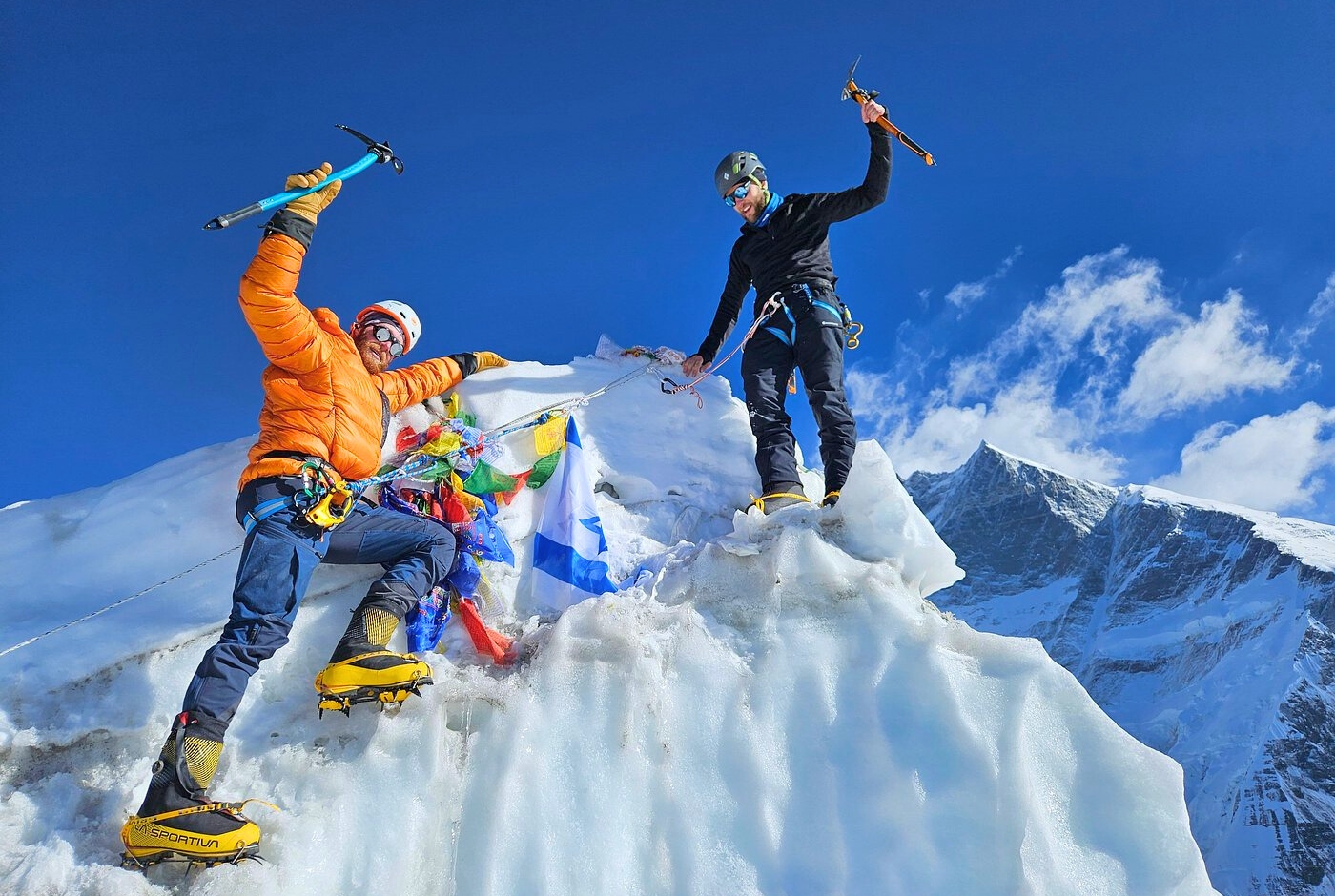
For aspiring mountaineers ready to take on a more demanding challenge, Island Peak—known locally as Imja Tse (6,189m / 20,305 ft)—offers a natural next step. Located within Sagarmatha National Park, not far from the famed Everest Base Camp, this iconic trekking peak near Everest provides access to one of the most spectacular settings in the Himalayas.
Island Peak introduces climbers to a higher level of difficulty and altitude. It is not a technical monster, but it demands focus, preparation, and respect for high-altitude conditions. For those who have trekked before and now want to try a true Himalayan climb, this peak represents both a test and a milestone.
Though it avoids long stretches of complex climbing, Island Peak involves moderate technical sections that provide critical mountain experience. Climbers must cross glaciers, ascend fixed ropes on steeper snow slopes, and manage basic alpine tools—ice axes, crampons, and rope systems. This is where trekkers begin to feel like mountaineers, and why climbing Island Peak is often chosen by those preparing for even bigger objectives, including Everest, Lhotse, or Ama Dablam.
By 2025, its popularity is expected to remain high, particularly among first-time Himalayan climbers looking to expand their skills. The climb offers tangible progression—from hiking to mountaineering—while remaining within reach for those with a strong trekking background and the willingness to train.
The summit view is unforgettable. From the top of Imja Tse, climbers witness a sweeping panorama of the Khumbu: the sheer walls of Lhotse and Nuptse, the familiar outline of Everest, the surreal Khumbu Icefall, and the distant might of Makalu. It’s a front-row seat to the world’s highest mountains—earned, not imagined.
The journey itself is equally rich. The approach trail winds through legendary Sherpa villages, ancient monasteries, and vast alpine valleys. It’s a complete immersion—not just in altitude, but in the culture and spirit of the Everest region.
Mera Peak: An Ascent to Panoramic Grandeur in the Solitude of Khumbu
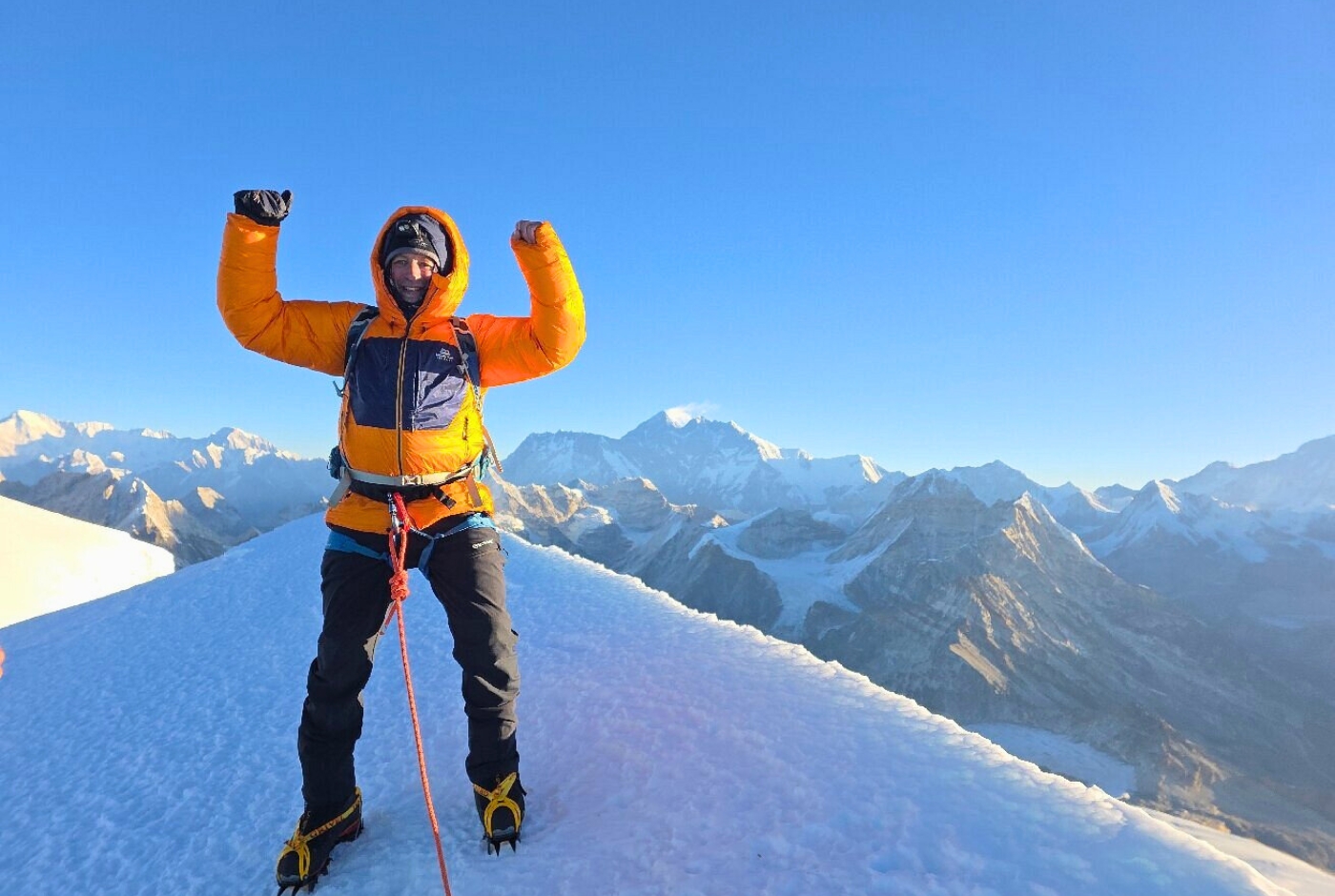
Tucked into the quiet folds of the Khumbu’s eastern flanks, Mera Peak (6,476m / 21,247 ft) rises as Nepal’s highest trekking peak—both in altitude and aspiration. Unlike more trafficked Himalayan trails, Mera draws climbers into a wilder, more contemplative space. For those seeking their first serious high-altitude climb in Nepal, Mera Peak offers the rare mix of solitude, scenic reward, and physical challenge.
Though its summit towers well above 6,000 meters, the route to Mera Peak is non-technical. This makes it an excellent choice for fit trekkers looking to push into extreme altitude without heavy climbing complexity. The difficulty lies in endurance, not gearwork. It is a test of the body’s ability to move, adapt, and recover in thin air.
To succeed on Mera, climbers need strong cardiovascular stamina and multi-day hiking capacity. Expeditions typically span 18 to 20 days, allowing proper acclimatization—a vital element for any safe high-altitude climb in Nepal. Planned rest days and gradual elevation gain reflect a growing awareness of altitude risks, with routes increasingly structured for safety as climbers prepare through 2025 and beyond.
The journey into Mera begins in the peaceful Hinku Valley, far removed from the main Everest Base Camp trail. Days wind through forests, glacial rivers, and open alpine tundra before the climb begins in earnest. The approach itself becomes part of the reward—offering pristine landscapes and a deeper connection to the remote Himalayan interior.
And then there’s the summit. From Mera’s crown, a staggering Himalayan panorama unfolds: Everest, Lhotse, Makalu, Cho Oyu, and Kangchenjunga—five of the world’s fourteen 8,000-meter peaks—rise above the horizon. Supporting giants like Nuptse, Baruntse, and Ama Dablam complete the view, one of the most sweeping in the region.
Throughout the expedition, climbers witness the gradual transformation of landscape: from lush valleys to icy moraines, from rhododendron forests to shimmering glaciers. Wildlife, silence, and altitude shape each day. The Zatrwa La pass, often part of the descent, adds one final dramatic crossing to round out the journey.
Despite its non-technical nature, Mera Peak demands real preparation. Physical training should focus on long days at altitude, sustained climbs, and cold-weather exposure. Proper mountaineering equipment—boots, insulated gear, and glacier travel essentials—is crucial for comfort and safety in the high alpine.
Many routes to Mera also pass through traditional Sherpa villages. Places like Panggom, Khare, and Thuli Kharka offer cultural insight, quiet hospitality, and space to reflect. While Mera lacks the teahouse density of the Everest trail, the depth of solitude and local connection adds richness to the experience.
For beginner climbers in Nepal looking to move beyond trekking and into the world of altitude-focused expedition climbing, Mera Peak is an exceptional starting point. It balances ambition with realism—demanding, yes, but ultimately achievable for those who come prepared.
Pisang Peak: A Tapestry of Culture, Climb, and Annapurna’s Majesty
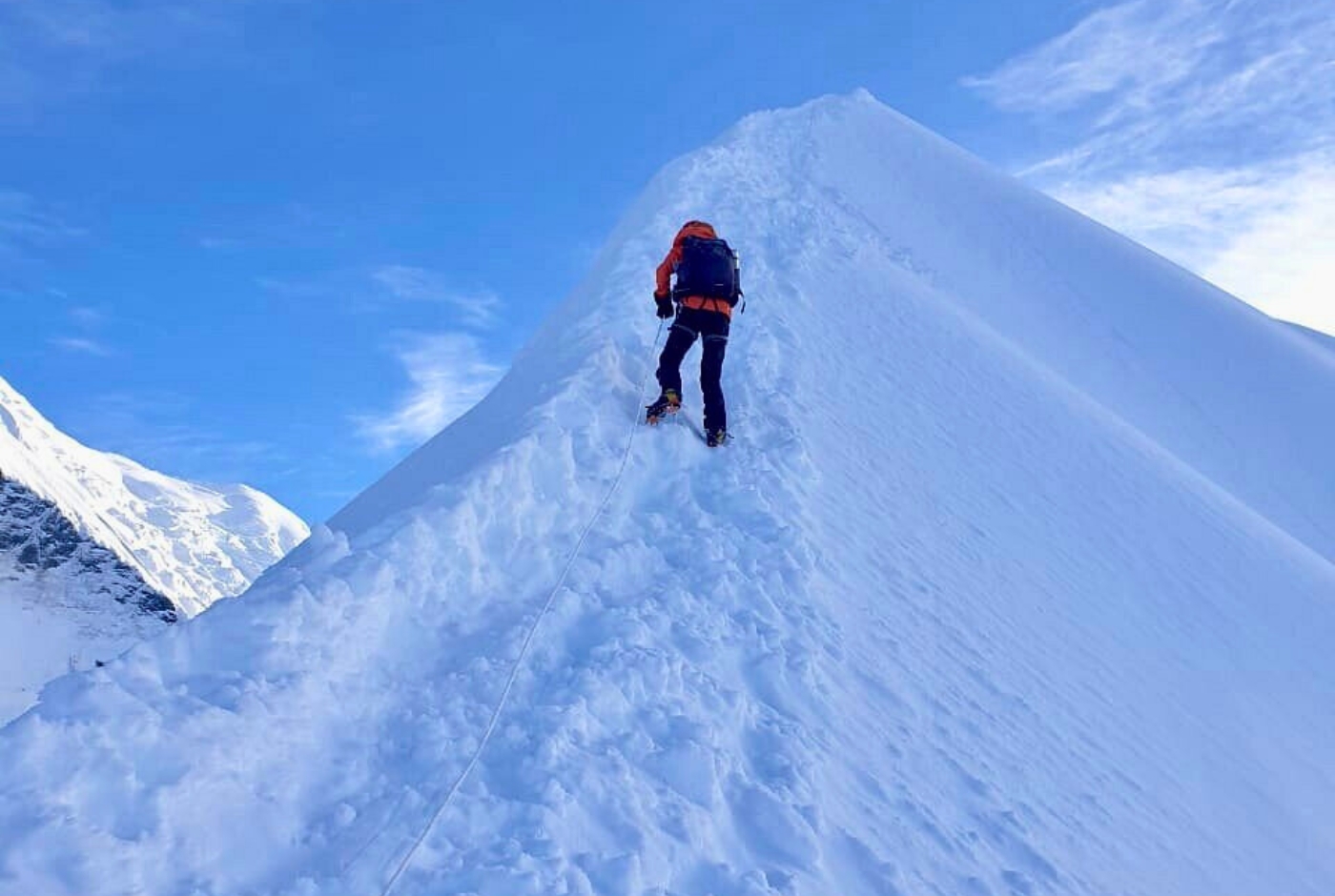
Set against the spectacular backdrop of the Annapurna Conservation Area, Pisang Peak (6,091m / 19,984 ft) offers a powerful invitation to those ready for their first high-altitude Himalayan climb. It stands as one of Nepal’s most rewarding trekking peaks for beginners and intermediates, blending alpine challenge with deep cultural and scenic immersion.
The climb introduces you to Himalayan mountaineering without demanding steep technical skill. While it rises beyond 6,000 meters—high enough to feel the weight and wonder of altitude—Pisang Peak avoids long technical pitches, making it an ideal step for those growing their skills and mountain confidence.
One of its key strengths is location. The route often intersects with the famed Annapurna Circuit, weaving into one of Nepal’s best-managed trekking corridors. This means well-marked trails, strong logistical support, and the benefit of a region known for safety, ecological care, and access to local assistance—an increasingly important factor as mountaineering infrastructure continues to improve through 2025.
The path to climbing Pisang Peak traces the Marshyangdi River, through steep gorges and high plateaus, into the stark beauty of the Manang Valley. Climbers often acclimatize while visiting places like Braga Monastery or Muktinath Temple—spiritual sites steeped in centuries of devotion. These moments of stillness give depth to the journey, balancing physical effort with quiet reflection.
A major acclimatization and adventure element is often the crossing of Thorong La Pass (5,416m)—one of the highest trekking passes in the world. This challenging high-altitude crossing serves as both a preparatory stage and a standalone achievement before the final ascent of Pisang Peak.
The summit reward is extraordinary: from the top, climbers are treated to expansive views of Annapurna II, III, IV, and surrounding giants of the range. It’s a quiet, commanding perspective that few trekking peaks in Nepal deliver with such intimacy. Unlike busier routes, Pisang Peak is less crowded, allowing a more personal encounter with the mountain.
The full expedition typically runs 15 to 20 days, depending on the chosen route. Along the way, you’ll meet Gurung and Thakali communities, whose hospitality and distinctive cuisines—especially traditional Thakali meals—deepen the regional experience.
Pisang Peak is physically demanding. It tests stamina and acclimatization readiness but does so in a setting where nature, heritage, and spiritual gravity converge. For aspiring climbers looking to move beyond trekking—and into a culturally rich, mountaineering-grade adventure—Pisang Peak offers one of Nepal’s most complete introductions.
Lobuche East: A Technical Ascent into the Everest Sanctuary
Rising prominently within Nepal’s iconic Khumbu region, Lobuche East (6,119m / 20,075 ft) offers an ideal next step for experienced trekkers ready to tackle a more demanding technical trekking peak in Nepal. Situated near the trail to Everest Base Camp, it offers both alpine challenge and unparalleled scenery—making it a favored climb for those looking to develop true mountaineering skill.
It’s important to distinguish Lobuche East from its sibling, Lobuche West. While close in proximity, they are distinct peaks with different levels of accessibility. Lobuche East, though classified as a trekking peak by the Nepal Mountaineering Association, offers a real taste of alpinism. It’s suitable for beginner climbers with prior trekking experience who are ready to expand into snow, ice, and rope-based climbing.
What sets Lobuche East apart is its steeper, more technical sections. The ascent includes snow and ice slopes that require comfort with crampons and ice axe usage, as well as navigating fixed lines and short-pitch climbs along its exposed summit ridge. These features provide valuable hands-on experience in real mountain terrain—making it a compelling choice for those training toward more advanced climbs.
For this reason, climbers are encouraged to develop and practice basic rope techniques, glacier travel, and vertical movement before the climb. Many opt to complete a pre-climb training course in Nepal, where instruction aligns with updated safety standards through 2025. While strong cardiovascular fitness remains essential, technical familiarity dramatically improves safety and enjoyment on this route.
From the summit of Lobuche East, the panoramic reward is exceptional. Mount Everest dominates the skyline, flanked by Lhotse, Nuptse, Ama Dablam, and Pumori. The Khumbu Glacier stretches out below, revealing the complex beauty of this high-altitude landscape, including views of the legendary Icefall from a rarely seen angle.
The climb to Lobuche East often includes or follows the Everest Base Camp trek, offering a seamless combination of cultural immersion, altitude conditioning, and iconic scenery. Over 15 to 18 days, climbers move through Sherpa villages like Namche, Tengboche, and Dingboche, staying in local teahouses and absorbing the region’s enduring mountain culture.
The journey transitions from green valleys into stark high-alpine terrain—moraines, rock faces, and icy plateaus. Acclimatization is carefully built into the itinerary, ensuring climbers can adapt safely and steadily to increasing altitude. This considered approach enhances both the physical outcome and the emotional depth of the climb.
For those seeking a more technical entry into Himalayan mountaineering, Lobuche East delivers challenge, beauty, and purpose in one unforgettable ascent.

